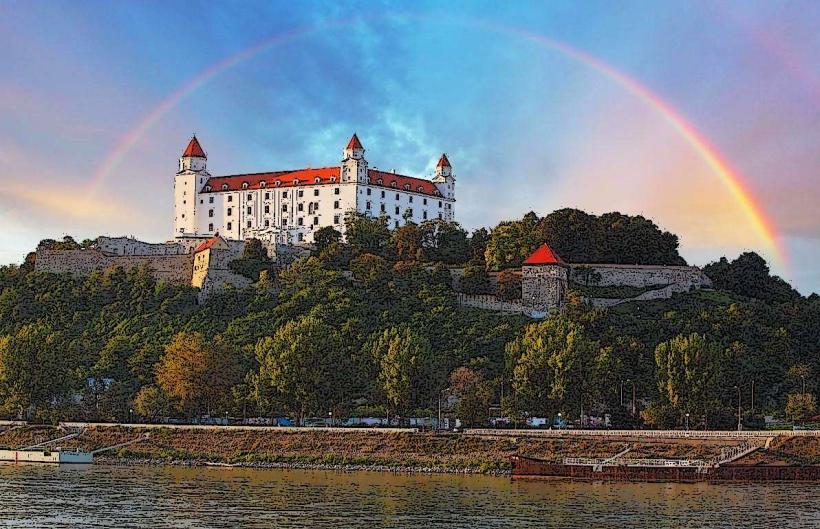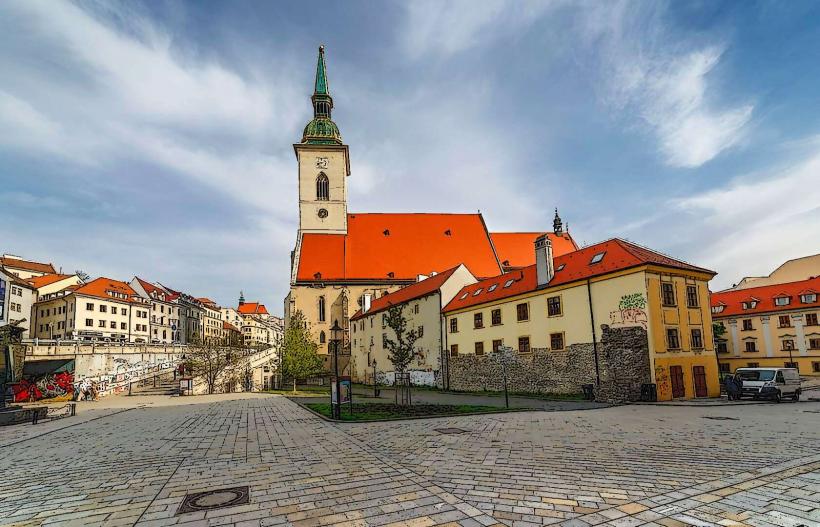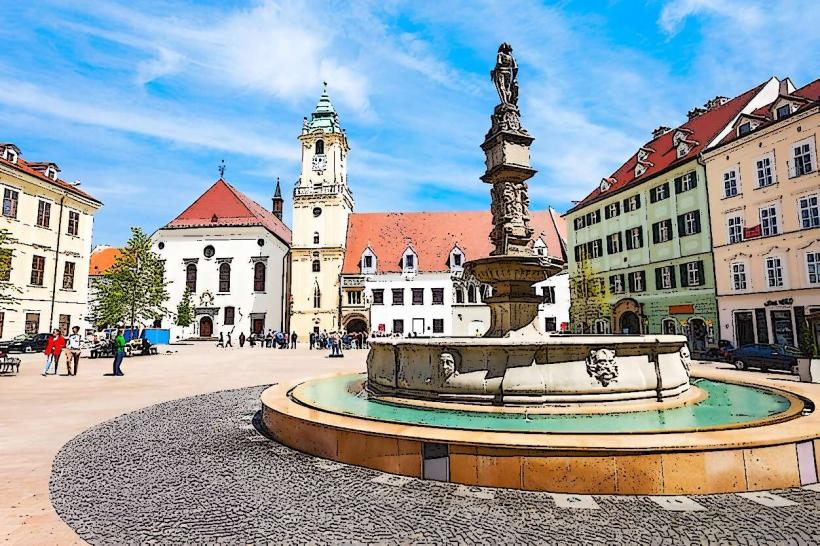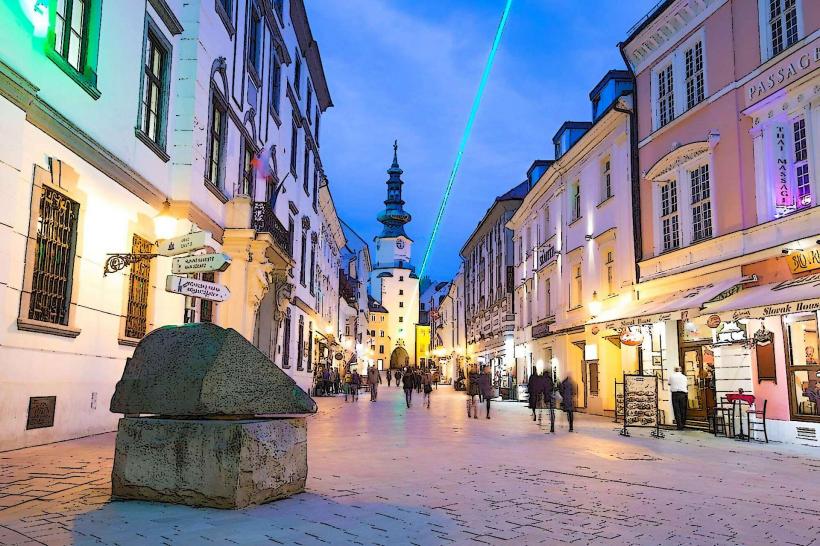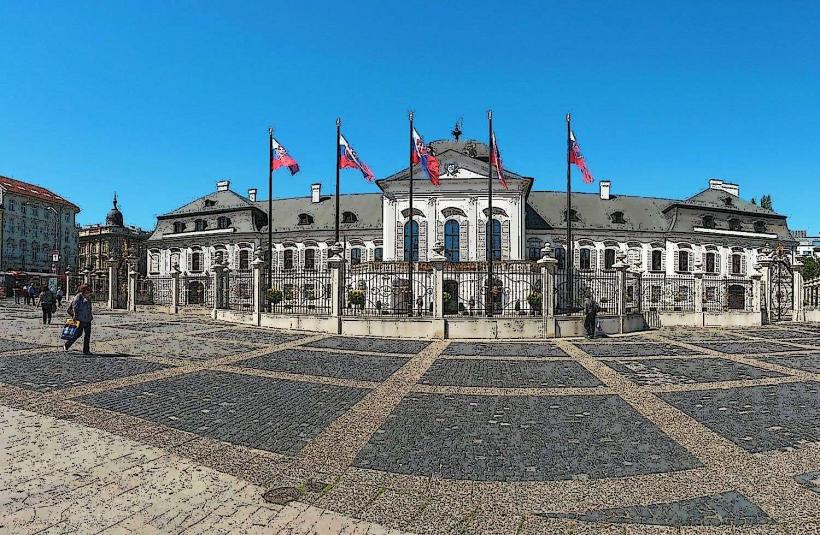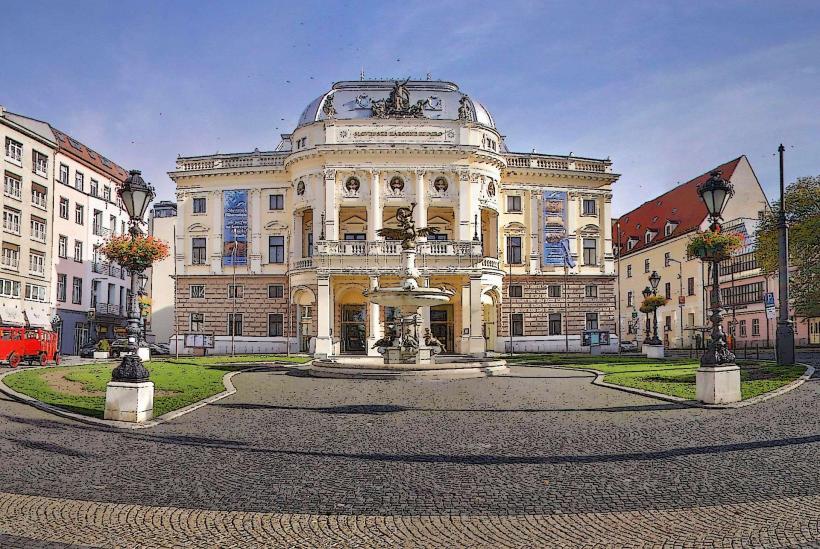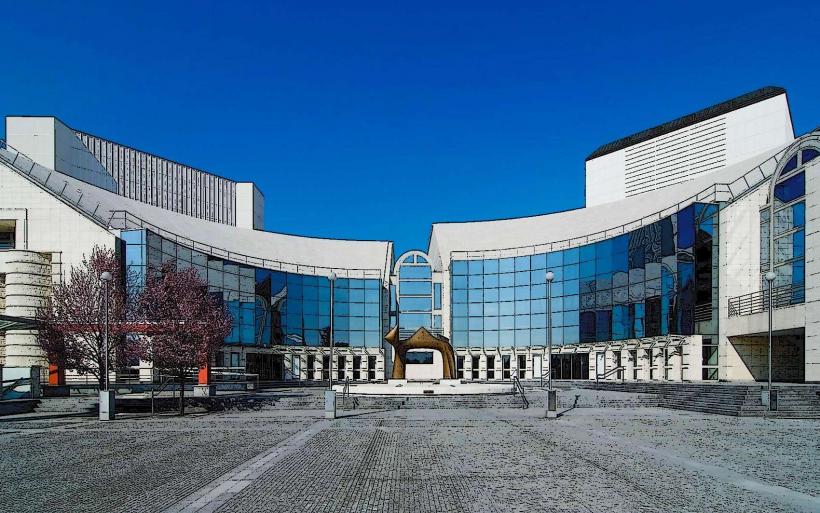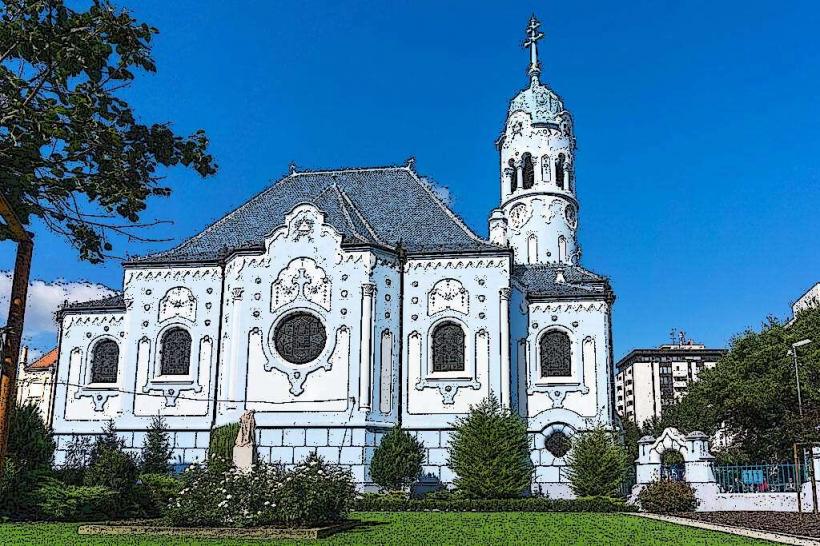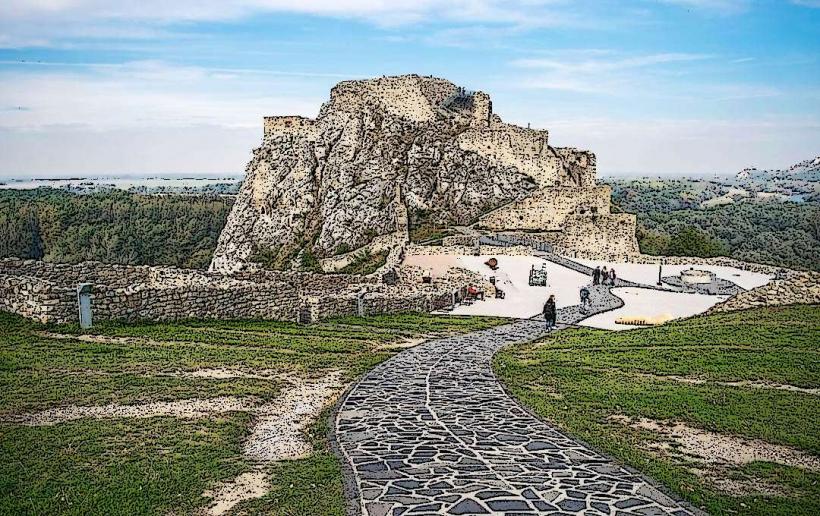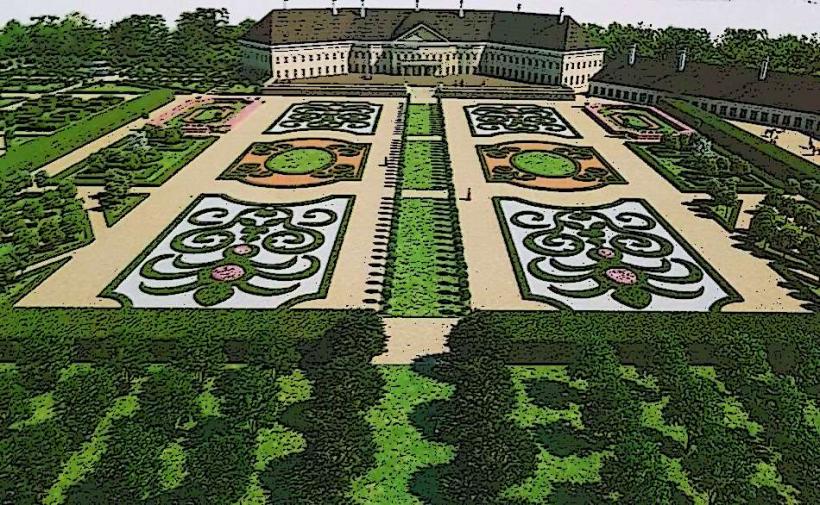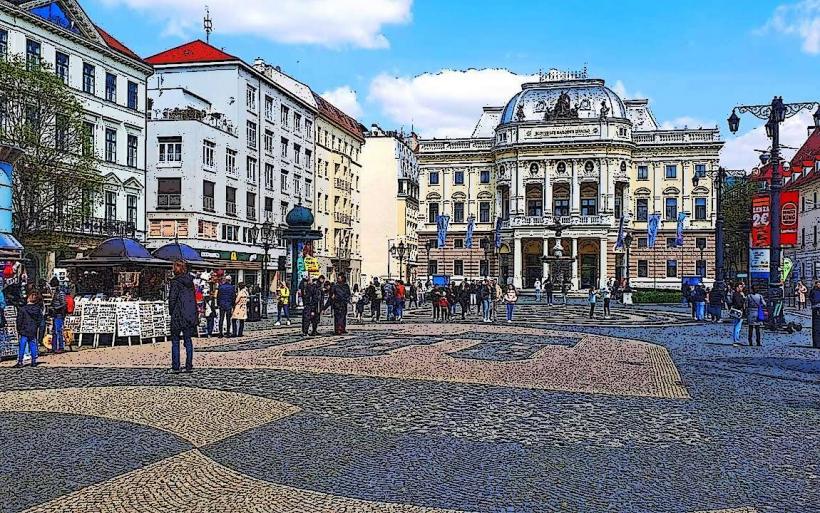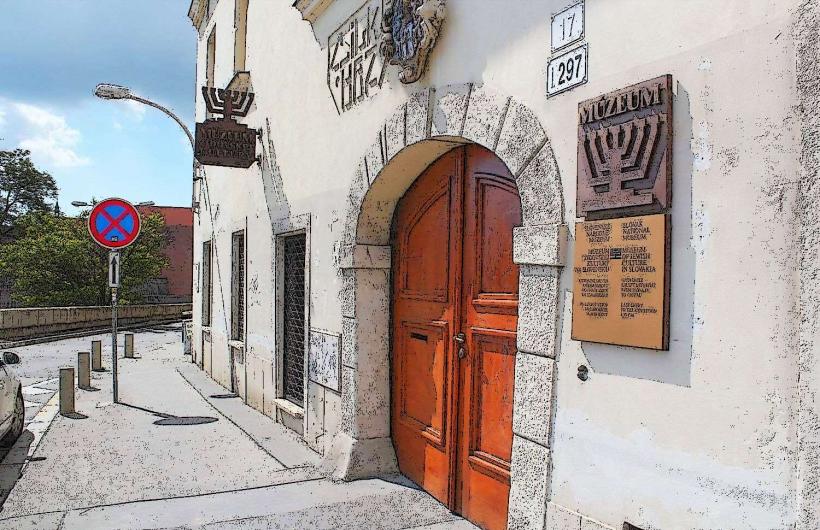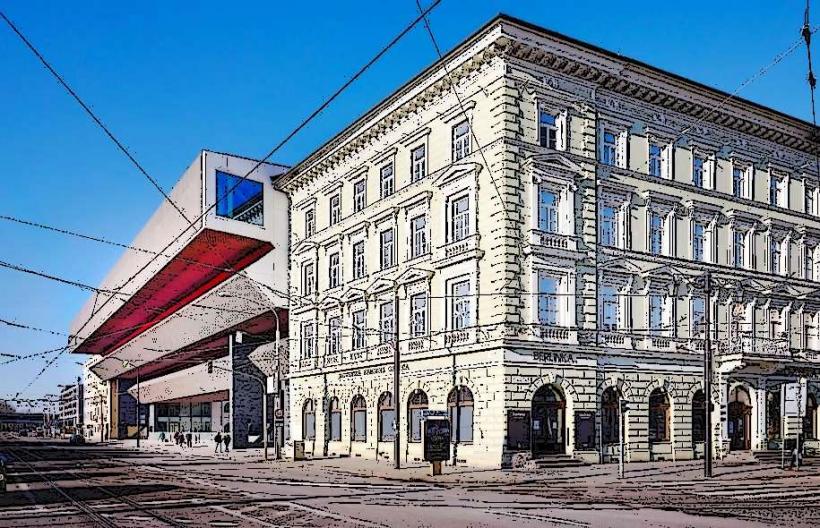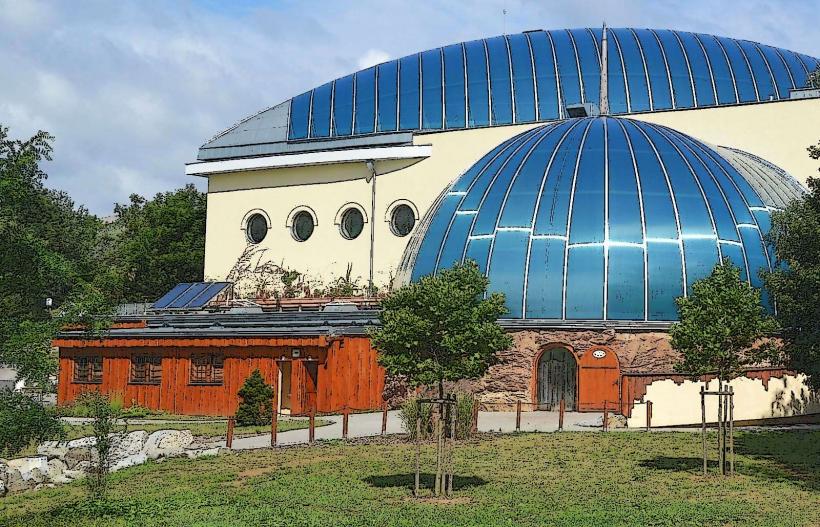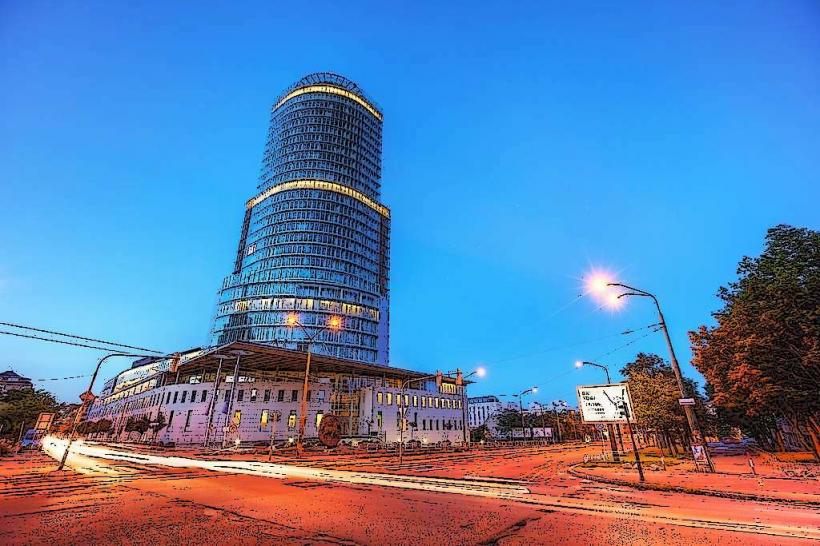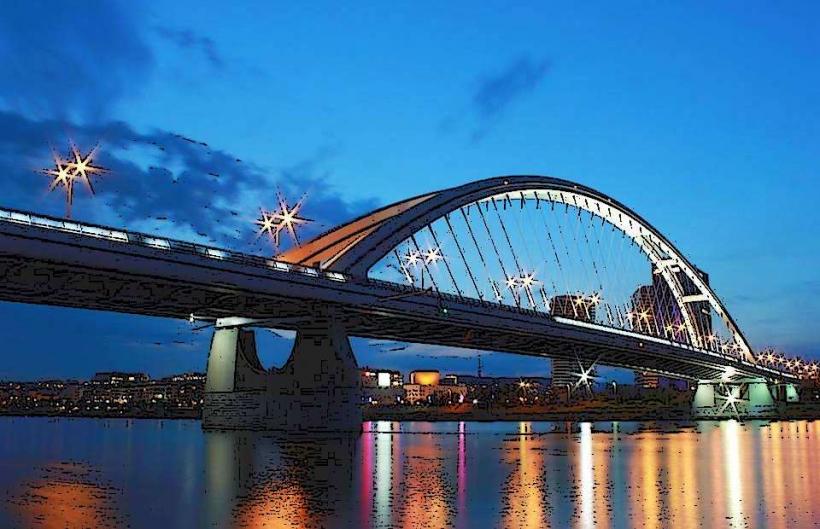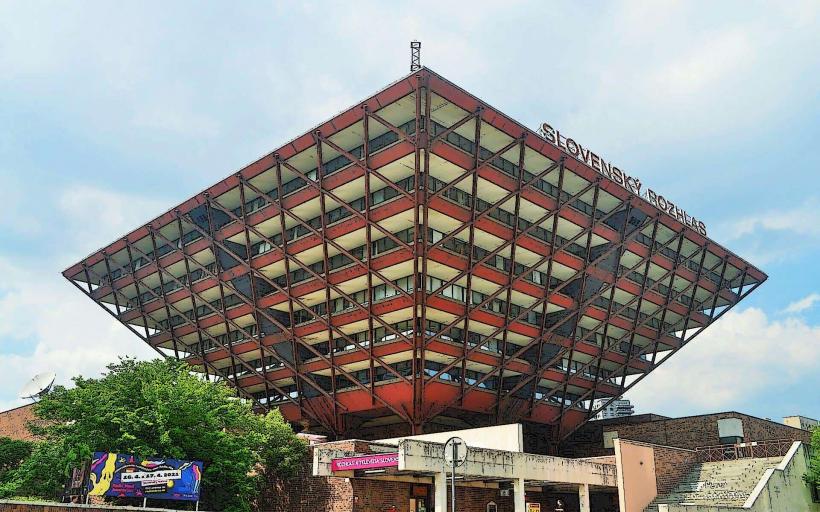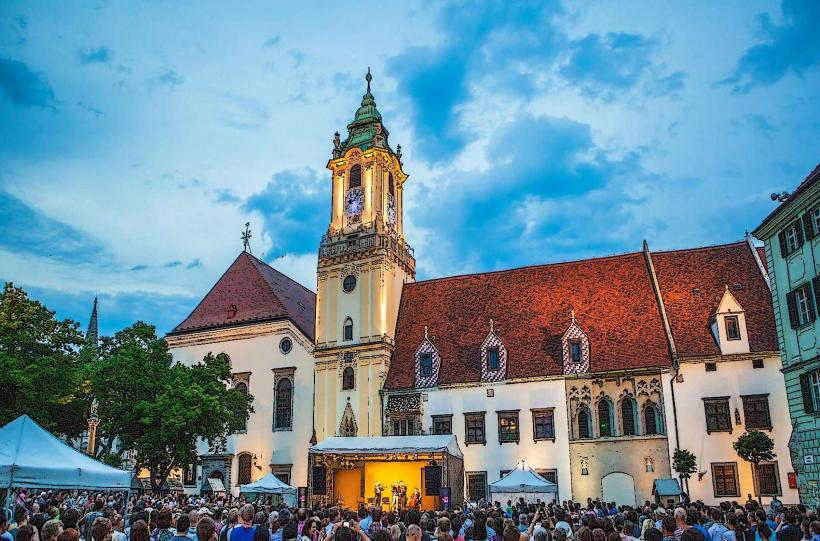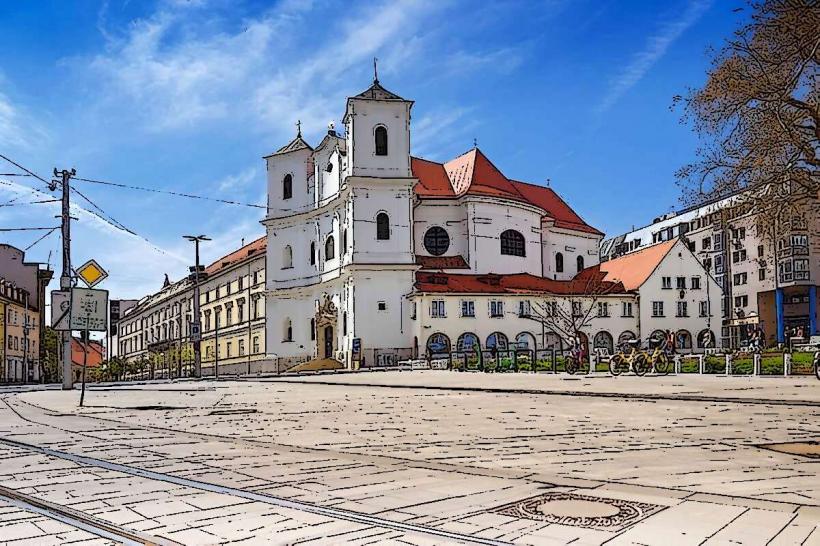Information
Landmark: Primate's PalaceCity: Bratislava
Country: Slovakia
Continent: Europe
The Primate's Palace (Slovak: Primaciálny palác) is a historic building located in the heart of Bratislava, Slovakia. It is an important architectural and cultural landmark that has played a significant role in the city's history. The palace is renowned for its beautiful architecture, its connection to the Hungarian Kingdom's administrative history, and its current function as a venue for ceremonial events and official functions.
General Information:
- Location: Bratislava, Slovakia
- Address: Primaciálne nám. 1, 811 01 Bratislava, Slovakia
- Coordinates: 48.1457° N, 17.1079° E
- Architectural Style: Classicism with Baroque and Rococo elements
- Function: Former residence of the Archbishops of Esztergom, currently used for official events, cultural functions, and ceremonial meetings
- Built: Between 1778 and 1781
- Architect: Melchior Hefele, later modified by József Hild
History:
Early Beginnings:
The Primate's Palace was constructed at the end of the 18th century as the residence for the Archbishops of Esztergom. Bratislava was a major center in the Kingdom of Hungary, and the palace was meant to reflect the significance of the ecclesiastical and political elite of the time.
Construction:
The palace was built between 1778 and 1781 under the guidance of the architect Melchior Hefele in a neoclassical style. It was commissioned by Archbishop József Batthyány, and the design was influenced by both the Baroque and Rococo styles, featuring elegant details and harmonious proportions.
19th Century and Beyond:
The palace remained the residence of the Archbishops of Esztergom until the mid-19th century, after which it began serving a more ceremonial and administrative function. Over the years, the palace also hosted various important visitors, including royalty and foreign dignitaries.
20th Century and Today:
After World War II, the building became a property of the city of Bratislava. It has since been used for a variety of official functions and cultural events, including wedding receptions, exhibitions, and public ceremonies. The palace is also home to the City Museum of Bratislava, which showcases the city’s rich history.
Architecture:
Exterior:
The building's exterior is characterized by neoclassical simplicity, with a symmetrical façade and large windows. The front of the palace features a beautiful balustrade, a common feature in neoclassical architecture, and a prominent central portico with columns.
Interior:
The interior of the Primate's Palace is a stunning combination of Baroque, Rococo, and neoclassical elements. It is most famous for its Hall of Mirrors, which features a beautiful chandelier and reflective surfaces that emphasize the grandeur of the space. The main stairwell is also an impressive feature, adorned with intricate carvings and gilded details.
The Hall of Mirrors:
This room is perhaps the most iconic part of the palace. It was used for important official functions, including meetings with dignitaries. The room is decorated with mirrored walls, chandeliers, and furniture that reflects the palace’s opulence. It is also where the peace treaty was signed between Napoleon and the Austrian Empire in 1809.
Chapel and Private Rooms:
The palace also includes a small chapel, used for religious ceremonies and services, as well as private rooms for the archbishops, furnished in the rococo style, with luxurious wallpaper, wooden floors, and fine paintings.
Functions and Events:
Official Functions and Ceremonies:
The Primate’s Palace is often used for important ceremonial events, such as weddings, official meetings, and state visits. The Hall of Mirrors and other rooms are used for diplomatic functions, and the building hosts guests of state, members of the Slovak government, and other dignitaries.
Cultural Events:
The Primate's Palace is also used as a venue for cultural events and exhibitions. It regularly hosts art exhibitions, classical music performances, and public celebrations. These events help make the palace a dynamic part of Bratislava’s cultural landscape.
City Museum:
The palace is home to the City Museum of Bratislava, which showcases artifacts, paintings, and exhibits related to the history of Bratislava and the Slovak region. The museum offers a glimpse into the past of the city, displaying historical objects from the Middle Ages through the 20th century.
Visitor Information:
Location:
The Primate’s Palace is located in Bratislava’s Old Town, close to the Main Square (Hlavné námestie), making it easily accessible for tourists visiting the city center.
Visiting Hours:
The Primate’s Palace is usually open for visitors during the weekdays and on weekends, although the exact visiting hours may vary depending on scheduled events. It is best to check the official website or visit the city museum for detailed opening hours.
Tickets and Tours:
Tickets for entry to the Primate’s Palace can be purchased at the entrance or in advance, depending on the event. Visitors can also book guided tours to learn more about the building’s history and significance. The guided tours provide in-depth information about the palace’s architecture, the history of Bratislava, and its role in Slovak culture.
Special Events:
Special events, including concerts, exhibitions, and other public gatherings, are often held at the palace. These events may require advance booking or specific tickets.
Nearby Attractions:
Main Square (Hlavné námestie):
The Main Square is just a short walk from the Primate’s Palace. It is the historic center of Bratislava’s Old Town and is home to several important landmarks, including the Old Town Hall and Maximilian Fountain.
St. Martin's Cathedral:
A short distance away, St. Martin’s Cathedral is one of the oldest and most important churches in Bratislava. The cathedral was the coronation site for Hungarian kings for many centuries.
Michael's Gate:
Michael's Gate is a medieval gate that served as an entry point to the city’s Old Town. It is one of the most important and well-preserved gates in Bratislava.
Bratislava Castle:
Bratislava Castle, perched on a hill above the city, offers sweeping views of Bratislava and the Danube River. It is one of the most iconic landmarks in the city.
Fun Facts:
Napoleon Connection:
The Primate's Palace is historically significant for its connection to Napoleon Bonaparte. In 1809, the peace treaty between Napoleon and the Austrian Empire was signed in the Hall of Mirrors of the palace, marking a pivotal moment in European history.
Role in Diplomacy:
The palace’s opulent surroundings have made it a favored location for diplomatic talks and meetings with royalty and heads of state. It remains an important venue for high-level international diplomacy in Slovakia.
Architectural Influence:
The palace is a prime example of late-Baroque and neoclassical architecture in Bratislava, blending elegant design with the grandeur of the Austro-Hungarian Empire.
The Primate's Palace is not only a stunning historical building but also a symbol of Slovakia’s rich cultural and political heritage. With its elegant architecture, rich history, and significant role in Bratislava's urban landscape, it remains an essential site for both locals and visitors alike.

